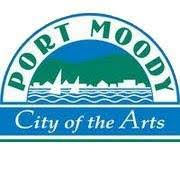Subject: Review of Community Survey – Concerns About Design Bias
- ANCA Administrator

- Apr 22
- 2 min read
Dear [Recipient's Name],
I was recently asked by a member of your community to review the survey related to the proposed development plan. As a market research professional with over 30 years of experience in survey design, I’d like to offer some feedback regarding how the structure of the survey may unintentionally introduce bias.
First, I want to acknowledge that the survey is strong in its communication. It clearly outlines the development proposal and articulates the intended benefits in a straightforward and accessible way. That clarity is commendable.
However, the survey is significantly limited in its ability to capture a full spectrum of community opinion—especially opposition. There is no direct question asking whether respondents support or oppose the proposed development, nor any opportunity for people to explain the reasons behind their position. There are also no open-ended questions that would allow concerns to be voiced in the respondent’s own words.
Instead, the survey asks participants to assess the importance of various universally appealing features—such as parks and community centers—without providing a way to contextualize those preferences within a broader opinion about the development itself. The assumption appears to be that if someone values these features, they will support the proposal. But in practice, people can value public amenities while still opposing a specific development on other grounds.
The most problematic design element is the allocation or ranking question, which asks respondents to rank the proposed benefits in order of importance. Those who oppose the development are still forced to rank the plan’s benefits, and since there is only one option related to maintaining the current zoning, they must assign at least second place to a benefit they may not support at all. This risks producing skewed data that can be interpreted as community endorsement, when in fact it may reflect dissatisfaction or opposition.
In the hands of a developer or other stakeholder, these survey results could easily be used to claim: “This is what the community values, and our plan delivers it.” Yet the survey does not give equal weight—or any weight—to the reasons why community members may not support the proposed rezoning.
It’s not difficult to design a survey that both communicates and listens. Typically, communities express concerns around issues such as:
Environmental impacts (loss of green space, pollution, flood risk)
Increased traffic and pressure on infrastructure and services
Negative effects on quality of life (noise, disruption, safety concerns)
Decrease in property values
Displacement or gentrification
Incompatibility with existing neighborhood character
Loss of cultural or historical assets
Insufficient transparency or meaningful community input
None of these concerns are addressed in the current survey design. Without these perspectives, the survey cannot offer a reliable or balanced picture of community sentiment.
I hope this feedback is helpful in improving future engagement efforts. Please don’t hesitate to reach out if further clarification would be of use.
Sincerely,
Jennifer Reid
Co-CEO Rival Group




I came across the exclusive fonts when I was searching for something refined but modern for a branding project. It has this premium feel that makes anything look more sophisticated. I used it for a luxury skincare brand logo, and the result was stunning. The font is clean and elegant, but it also has just enough uniqueness to feel special. Definitely worth trying if you're after something with an upscale, polished aesthetic.